A review copy of the module was provided. Read more Roll20 Reviews and watch the video reviews on my YouTube channel.
Support my content via Patreon.
Designed by: Wizards of the Coast
Vecna, one of the biggest big bads in D&D lore, is finally at the center of an official Fifth Edition campaign. Vecna: Eve of Ruin is a high-level, 10-20 adventure that spans nearly every official setting and famous region in the D&D Multiverse on a quest to stop the archlich from remaking the multiverse.
Check out my review of the optional prologue adventure, Vecna: Nest of the Eldritch Eye!
Warning: Massive Spoilers! DMs only!
The following is included in D&D Vecna: Eve of Ruin on Roll20 ($29.99):
-
- Vecna: Eve of Ruin module
- 11 Chapters
- 20 5-ft battle maps
- 8 10-ft battle maps (subdivided for 5-ft)
- 2 illustrative region maps
- Over 50 magic items (including the Rod of Seven Parts)
- Over 100 monster sheets, with token art and player art handouts (over 40 are new from the Monster Manual, but may be found in other 5e setting books such as Spelljammer or Eberron)
- Over 40 named NPCs with token art
- Over 60 player art handouts
- Vecna: Eve of Ruin Compendium
- Character dossier on major NPCs, such as Vecna, Tasha, and Kas
- Secrets Tracker
- Vecna: Eve of Ruin Art Pack
- Over 40 monster & character art handouts
- About 200 tokens, in 2 color styles
- Vecna: Eve of Ruin module
Seriously, if you’re going to play this at some point, do not read this review!
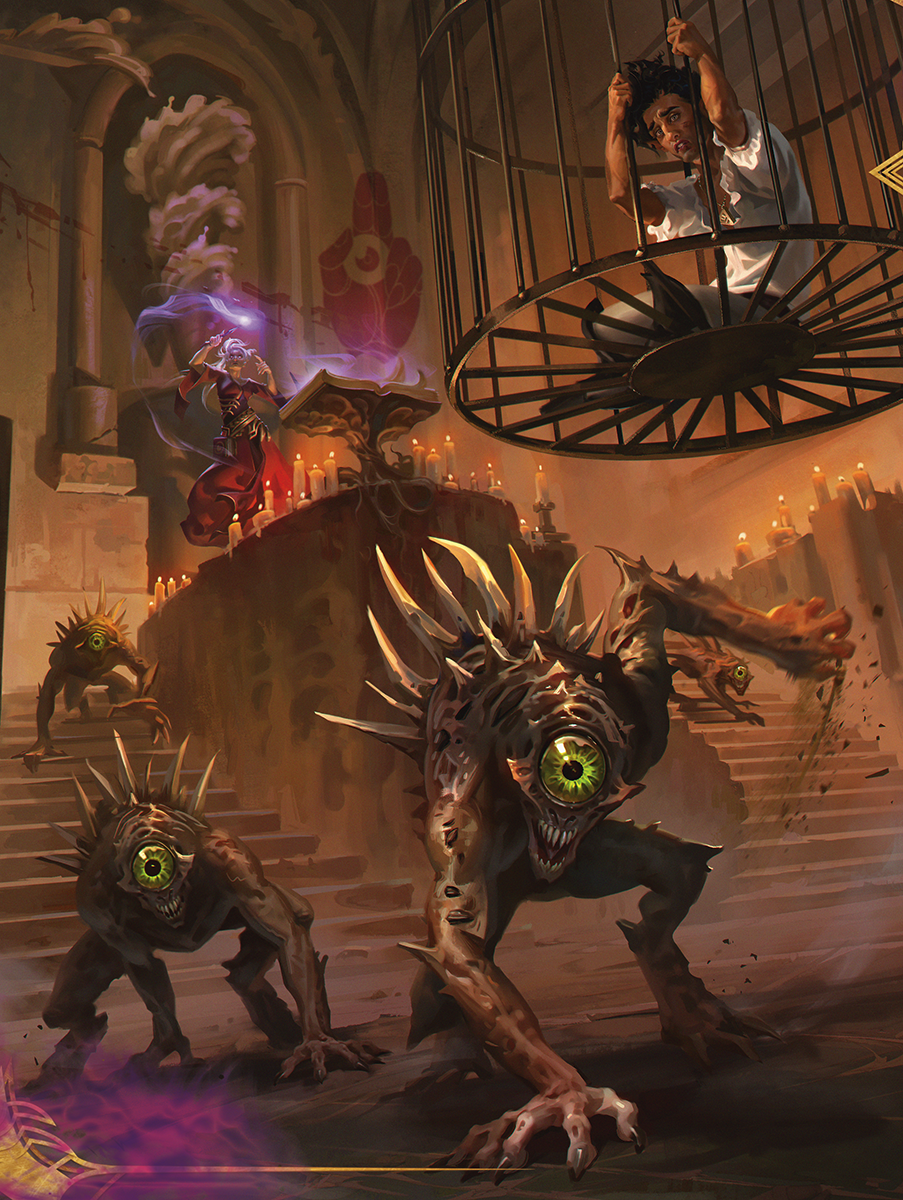
The story begins with a routine mission for our accomplished level 10 PCs: rescue some kidnapped nobles from Neverdeath Graveyard in Neverwinter (level scaling is available for as low as 7th level).
At the end of the classic crypt dungeon crawl, the party rescues the final kidnapped noble in the midst of a ritual designed to steal his secret and funnel the energy to Vecna. By disrupting the ritual, the party is briefly shunted into the Shadowfell, but more importantly, they become supernaturally linked to Vecna.
It’s an interesting, completely self-contained opening chapter. The DM could even run other adventures or scenarios afterward, before starting with Chapter 2. Though this lack of urgency is also problematic.
A campaign that covers over half a dozen D&D worlds deserves an amazing story, but Eve of Ruin falls flat. Vecna himself plays a bit part as a background figure weaving a ritual that transforms secrets into power, and with enough power he can remake the multiverse.
But other than that opening chapter, we never witness Vecna’s cultists making any more progress, or Vecna doing anything else, until we get to the Pandemonium war in Chapter 10.
Chapter 2 kicks off when the party is magically teleported to Sigil, and the interplanar home of Alustriel. The archmage, along with fellow famous wizards Tasha and Mordenkainen, have failed in casting their super-powered wish spell to stop Vecna, and instead summoned the heroes.
But wait! Mordenkainen isn’t really here at all; it’s a magically disguised Kas, the Dread Lord vampire who has major beef with former boss Vecna. He wants to stop, and supplant Vecna as the supreme overlord, and sees the party as a welcome opportunity.
Feauxkainen tasks the PCs with gathering the stupidly-named Rod of Seven Parts, which is strewn across multiple worlds and regions, as the McGuffin that can stop the archlich.
Thus we have our main plot: a series of fetch quests, which covers the rest of Chapter 2 through Chapter 8.
Each rod piece will tell the party where the next is located, and thanks to Alustriel’s magic home, the party can simply teleport back and forth — so long, tedious travel encounters!
Throughout the chapters, the party will venture to the following locations, in order: Underdark (Forgotten Realms), Spelljammer, Eberron, Ravenloft, Dragonlance, Greyhawk, and Avernus.
Each of these settings or regions have been introduced in previous 5e books (I believe Ghosts of Saltmarsh is technically Greyhawk).
Each chapter is mostly self-contained, with the party teleporting near where they need to be, which is almost always a dungeon crawl.
And hey, I love dungeon crawls!
Unfortunately the map art is about 85% Dyson Logos, a simplified black and white style I loath seeing on Roll20.
Damn it!

(some of the map art, however, is quite excellent and features full color by Francesa Baerald, such as the Lambent Zenith in Chapter 3, and the Red Belvidere region map in Chapter 8).
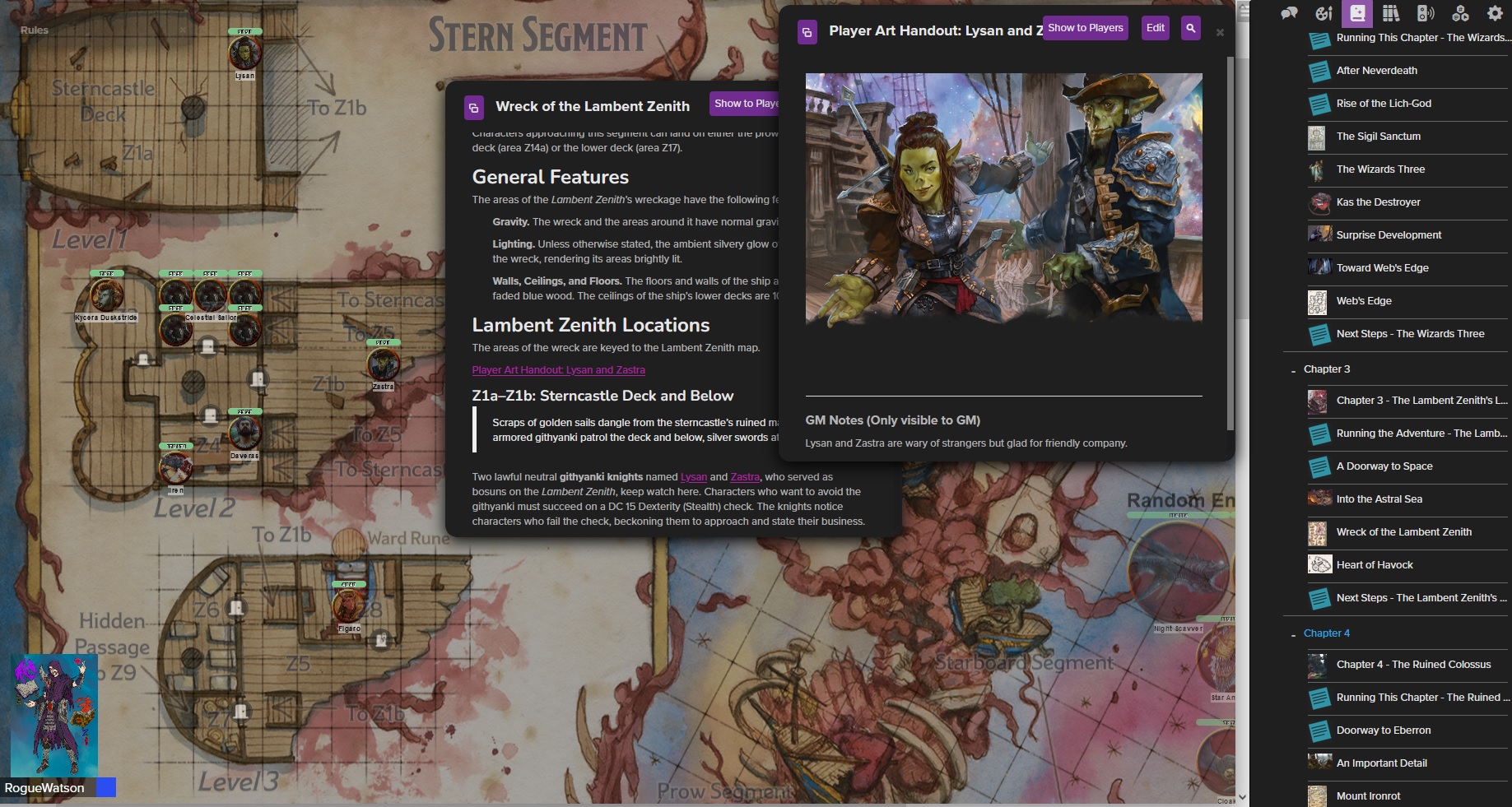
Also on the plus side — the token art is fan-tabulous, probably my favorite collection of token art since the Dragonlance 5e release. Almost every single NPC, including randos with a name but a normal statblock (such as “mage”) get their own token art, which is awesome to see.
The dungeons are also pretty great. I dig the variety of locations and scenarios through these interplanar chapters: exploring the destroyed remains of a giant warforged colossus, trying not to get into too much trouble inside a high-stakes casino in Avernus, and helping out the crew in a recently crashed starship in the Astral Sea.
I particularly enjoyed the obvious Tomb of Horrors-inspired Tomb of Wayward Souls in the Greyhawk chapter, a wonderful thesis on “What if Tomb of Horrors, but modernized and not completely bullshit for the players?” Granted we already got that with the Tomb of the Nine Gods in Tomb of Annihilation, but the Tomb of Wayward Souls manages to check all those boxes in only a single level!
But as mentioned above, there’s no real connective tissue between chapters. Every new location has new NPCs with new problems and cool situations, but it all feels a bit slap-dashed and disjointed.
Couldn’t we have Vecna’s agents also hunting down the rod pieces — or the PCs themselves? Or showcase reality falling apart by Vecna’s ritual? Something?
The one cool thing the campaign does offer is the power of secrets.
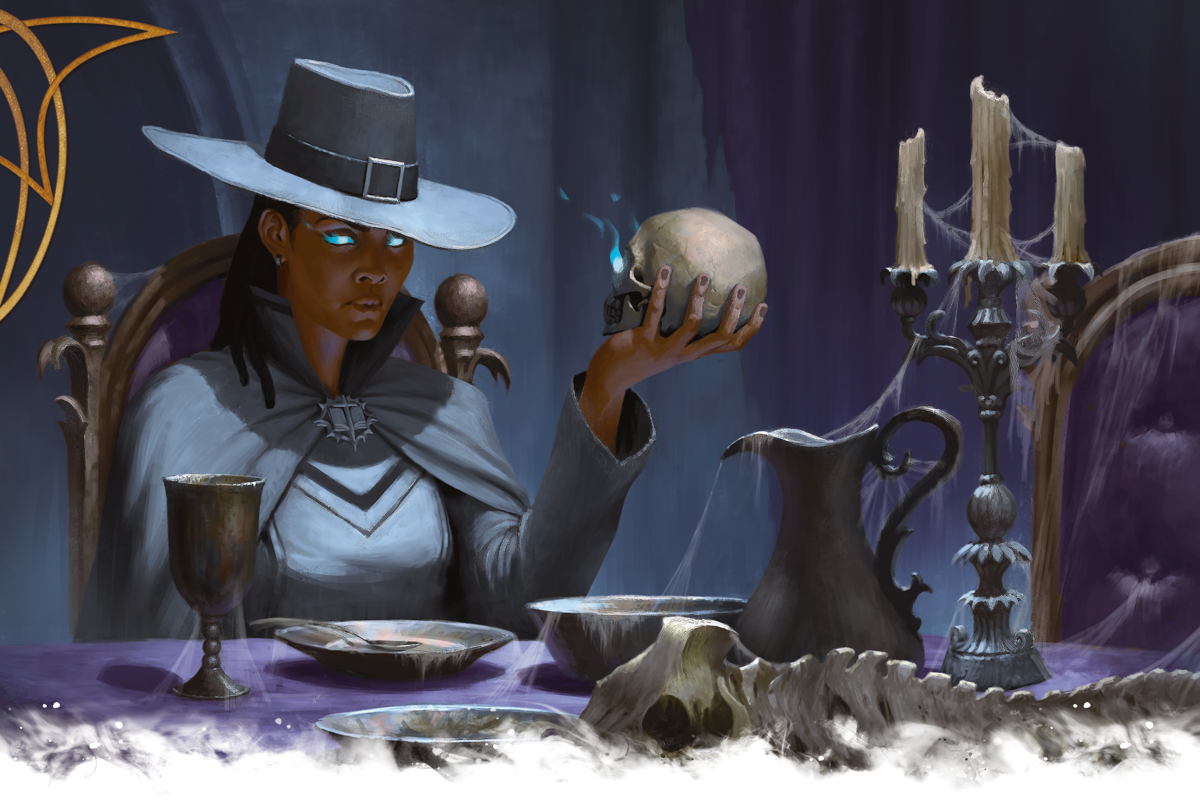
Secrets as power is Vecna’s whole thing, and it’s fun to see it implemented here as a campaign-wide tracker, resource, and buff system.
As the PCs rescue and help NPCs, they can learn their most powerful secrets. Because of their Vecna-connection (Vection?), they can spend these secrets to gain an incredibly powerful buff: advantage on all d20 rolls for 1 minute.
Hot dang!
But if they hoard secrets without spending them, they gain a big buff during the final confrontation with Vecna. Nice!
Once all the pieces have been collected, Fauxkainen makes his big reveal as Kas the vampire lord (gasp!), takes the newly assembled Rod, and escapes to Pandemonium, the plane of chaos, where he hopes to free the demon-spider-lord Miska, to help take out Vecna.
Wait, what?
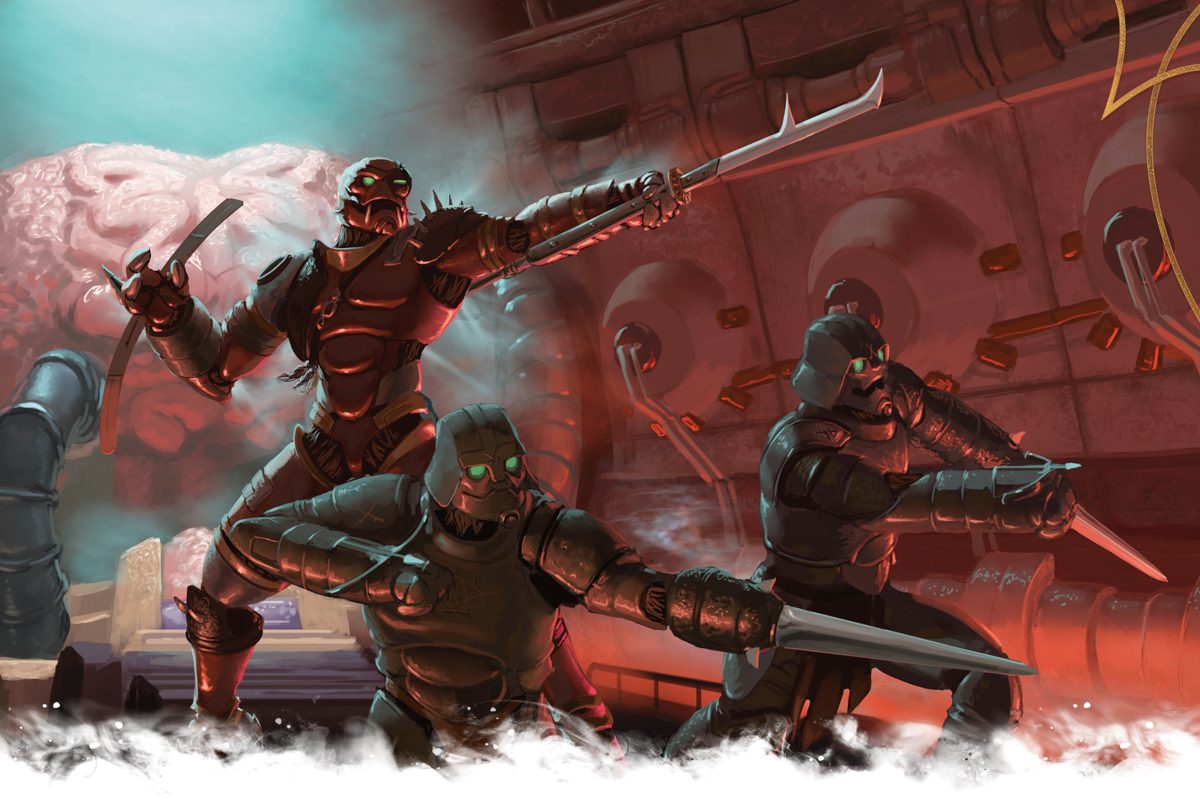
The whole Kas thing starts cool, but quickly becomes a wasted opportunity. Kas and Vecna have delicious drama in their backstory, and it would’ve been amazing for the party to learn and use that to their advantage. If only Kas wasn’t depicted as a one-note villain. Sigh.
Chapter 10 gives the party some options in how to draw the vampire lord out, though most likely they’ll do them all, including stopping Miska from coming through the portal, and defeating a Lloth general (Lolth is apparently allied with Vecna).
It’s neat to see a giant planar war between two supervillains, I guess, even if neither of them are actually freaking Vecna.
Once the party recovers the assembled rod and takes out Kas (no dialogue at all, really?), they finally learn the location of Vecna’s cave.
The final chapter is a lot more personal and quieter than the previous one, which isn’t necessarily a bad thing as the party makes their way through interesting future-visions of Vecna’s dark world to come. Though the final battle feels very anticlimactic and abrupt, especially for fully powered level 20 PCs, and the epilogue is basically “they have a celebration, idk.”
As a high-level anthology of adventures and dungeon crawls, Eve of Ruin is awesome. But it’s not an anthology; this is a campaign! With some work from a good DM (and a cartographer), there’s a lot of potential here, but I’m also getting sick of saying that after almost every single 5e release.
Pros:
- Worthy high-level campaign that feels earned.
- Features just about every D&D setting and infamous area, from Avernus to the Underdark, and Dragonlance to Spelljammer (sorry, Athas, you’re still not invited).
- An excellent variety of interesting dungeon designs and memorable scenarios.
- Secrets as a special power and currency the party earns throughout the campaign.
- Huge amount of tokens, and nearly every single creature and NPC has token art.
Cons:
- Chapters/areas lack satisfying epilogues or connections.
- Kas’ role and character is a hugely missed opportunity.
- No interactive Secrets Tracker?
- Most maps are Dyson Logos/black and white art style.
The Verdict: The maps are disappointing and the story too basic, but Vecna: Eve of Ruin does offer a rare high-level campaign and a huge amount of fantastic dungeon ideas while speed-running through the most infamous worlds and regions of Dungeons & Dragons.
A review copy of the module was provided. Read more Roll20 Reviews and watch the video reviews on my YouTube channel.
Support my work via Patreon.
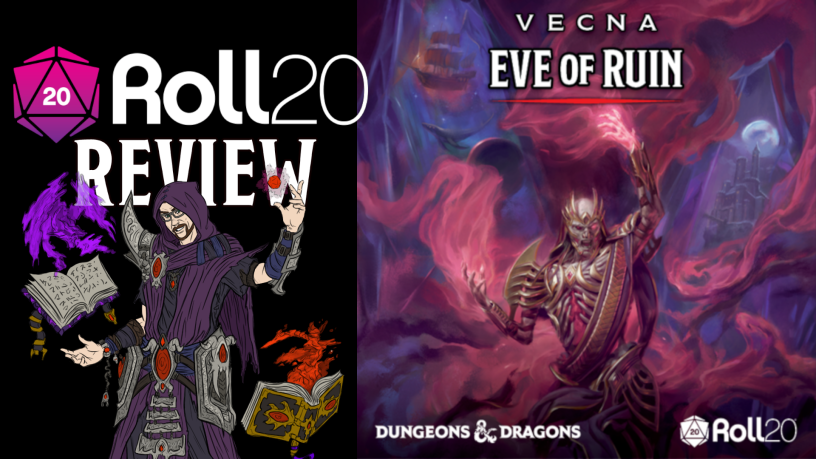
Kinda’ sounds like a GM wanting to do Vecna justice should get the Rise/Fall of Vecna books from Drivethru instead.
LikeLike
You mean these?
LikeLike